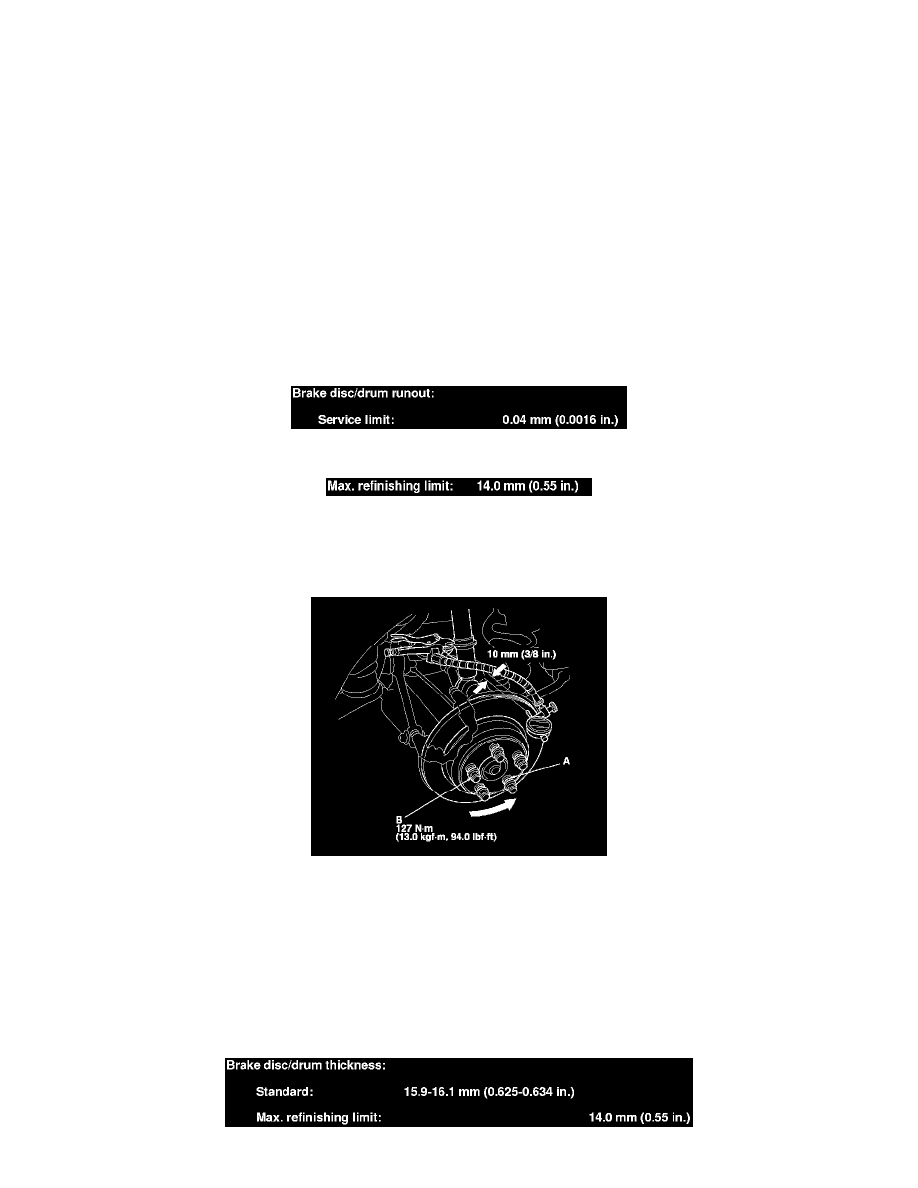RL V6-3.7L (2009)

Brake Rotor/Disc: Testing and Inspection
Rear Brake Disc Inspection
Rear Brake Disc Inspection
Runout
1. Raise the rear of the vehicle, and support it with safety stands in the proper locations. See: Maintenance/Vehicle Lifting/Service and Repair
2. Remove the rear wheels.
3. Remove the brake pads. See: Brake Pad/Service and Repair/Rear Brake Pad Inspection and Replacement
4. Inspect the brake disc/drum surface for damage and cracks. Clean the brake disc/drum thoroughly, and remove all rust.
5. Install suitable flat washers (A) and wheel nuts (B), and tighten the wheel nuts to the specified torque to hold the brake disc/drum securely against
the hub.
6. Set the dial gauge up against the brake disc/drum as shown, and measure the runout at 10 mm (3/8 in.) from the outer edge of the brake disc/drum.
7. If the disc is beyond the service limit, refinish the brake disc/drum with a Honda-approved commercially available on-car brake lathe.
NOTE:
-
If the brake disc/drum is beyond the service limit for refinishing, replace it. See: Service and Repair/Rear Brake Disc Replacement
-
A new disc should be refinished if its runout is greater than 0.04 mm (0.0016 in.).
Thickness and Parallelism
1. Raise the rear of the vehicle, and support it with safety stands in the proper locations. See: Maintenance/Vehicle Lifting/Service and Repair
2. Remove the rear wheels.
3. Remove the brake pads. See: Brake Pad/Service and Repair/Rear Brake Pad Inspection and Replacement
4. Using a micrometer (A), measure disc/drum thickness at eight points, about 45 ° apart and 10 mm (3/8 in.) in from the outer edge of the brake
disc/drum. Replace the brake disc if the smallest measurement is less than the max. refinishing limit.
